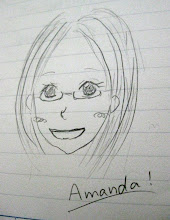Okay, I’m a linguist at heart, so you’ll have to bear with me as this post will be mostly my random observation and my lack of explanation for something entirely language related. Could this be learning in disguise?!? It’s like Transformers, but with fewer explosions.
So, I had seen in manga and anime where characters, normally young girls, refer to themselves in the third person. One of the most recent examples was in a one-shot in Shonen Jump where a young girl who had been raised by cat people introduced herself to a boy, saying, “Tama wa Tama da yo!” Which basically translates to “Tama is Tama!” (Tama is a common name for cats in Japan, like Fluffy in America or Rover or Spike are for dogs) It’s cute, and amusing to read, but I have now observed this is real life.
I was eating lunch with my new first graders at elementary school. It was the first time I had ever been with them, so they were really excited. They proceeded to ask me six thousand questions, only slightly grasping the fact that my Japanese really isn’t that good, especially when the questions are being asked at three thousand miles an hour from mouths that are half full of food. However, this lunch session went admittedly better than my very first lunch with last year’s first graders.
Along the way one of them asked my birthday. I told them in Japanese, and this led to a flurry of responses from the children. The girl next to me said (translated into English for your convenience), “Akane’s birthday is June 22nd.” The girl down the table said, “Ryo’s birthday is May 5th.” At first I thought that all of the kids were simply informing me of all of their friend’s birthdays. But then I glanced at the name tags.
Let me explain this for a moment. Japan has three writing systems. Hiragana and katakana are syllable systems where each symbol stands for a sound. For the most part, hiragana is used for Japanese words and katakana is used for foreign loan words. I can read katakana and hiragana very well. But that brings us to kanji. Kanji come from Chinese and are essentially pictographs. Pictures that represent ideas. There are thousands of them. And nearly all of them have multiple pronunciations depending on how they are being used and what other kanji they are combined with. When people ask if I can read Japanese here I often comment on how difficult kanji is. Almost always the reply I get is that kanji are difficult for Japanese people too.
Because these children are first graders, all of their name tags are written in hiragana. Once the kids learn the kanji that are in their names, they get new name tags, as now everyone in class should be able to read it and the child should be able to write it on their own. I can read some kanji, but often not the ones in my student’s names. Even if I do recognize a kanji in their names, it is often not pronounced the way it is in other words. I often don’t even glance at the name tags of my older kids because there is just no hope I could even begin to understand or remember them all. But these kids are really small and are still learning the kana and barely know any kanji themselves. So I can read all of them.
And once I started glancing at name tags I was a bit surprised. The girl next to me was named Akane. The one who had told me “Akane’s birthday is June 22nd.” This made me pause for a moment. And then I looked at the other little girls. Sure enough, each one had told me her own birthday using the third person possessive of her own name. Then the little boy next to me chimed in. He did not use the third person of his own name. He very skillfully used a pronoun! He even used “boku” the slightly informal pronoun usually used by guys.
I really can’t explain this phenomenon. I remember reading an editor note somewhere in a manga (I’m pretty sure it was Loveless) that informed me that speaking in the third person is a trait common to young children and thus, if used by anyone above the age of like 8, it becomes a sign of immaturity. And I suppose if it’s used by a boy it could be used to show that he is more feminine. So I understand its use in fiction as an easy way to tell you about the character’s personality through dialogue. But I can’t really understand why it happens in real life.
I can, however, attest to the fact that it is absolutely adorable.












No comments:
Post a Comment